
In last week's post on
Catherine de Medici, the citizens of Florence were debating what to do with the 13 year old Medici Duchess. The options were:
A. Strip her naked and exposed her on the city walls as target practice.
B. Place her in a brothel to spoil her marriage value.
C. Lock her up in a convent
Fortunately for Catherine, the citizens went with option C, but Catherine never knew if they would come storming into the convent to enact plan A or B. At one point, she even cut off all her hair and donned a nun’s habit daring the people to hurt a bride of Christ. Catherine intended to survive even if it meant a life of seclusion.
Yet, just a few months earlier the Florentine people had called her “Duchessina” (little duchess) and loved and respected her. We can imagine a 13 year old girl not fully understanding why her people had loved her one minute and then wanted her dead the next. Such a precipitous fall from grace cemented Catherine's distrusting nature. We will see this chariness color her political decisions later in life.
(more on that later...)
Where was I? Ah yes, death and destruction…

Rome….A Bigger Mess
Months earlier, Catherine’s cousin Giulio de Medici, (Pope Clement VII) had some uninvited guests in the form of Spanish and German troops under
Charles V. The main forces consisted of 13,000 German reiters and these brutes were not attacking Rome for religious redemption. They mostly just wanted booty. Instead of being paid, they worked out an agreement where they agreed to sack Rome if no limit was set to their pillaging. And pillage they did. They helped themselves to Rome’s goodies like hyperactive kids on a sugar high. It was said that their commander, von Frundsberg, wore around his neck a gold chain with the sole purpose of strangling the Pope. To amuse themselves further, they dressed an ass up in papal vestments and ordered a priest to feed it the consecrated Host. I don’t find it very funny, but the Germans found it hilarious. When the priest refused, they hacked him to pieces. hmmmm...still not funny.
All of these stories most likely reached Catherine.
But Frundsberg didn’t get to use his gold chain because Clement escaped disguised as a servant with a long beard and tattered hat. It wouldn’t have fooled me, but barbarians are not too smart when they are busy pilfering.
So with his papal robes dragging behind him, Clement hid out at the Castel St. Angelo while the holy city took a good beating. It was roughly during this time that English legates came to see the pope about Henry VIII’s divorce from Catherine of Aragon. They found Clement sitting on a straw pallet with his gouty leg propped up, vowing never to shave again. Clement was on hard times.

So let's recap. We have a very pissed off Pope, dressed like a pauper, sitting on a straw throne, needing a shave, his palace in Rome is in tatters, his people have been murdered and raped, and now the city where he came from was revolting and trying to drive out his Medici relatives. I am not defending the guy, but let’s just say he was probably in a bad mood. Clement felt betrayed by the Florentine revolt and intended to put it down swiftly and cruelly. Machiavelli didn’t dedicate
The Prince to Clement’s brother, Lorenzo II, for nothing. Clement ‘s mission to put down the Florentine revolt reflected a Medici family mantra - “do evil if necessitated.”

In an act of marketing genius, Clement then made a secret agreement with Charles V to end the destruction in Rome in exchange for placing the crown of Charlegmagne on Charles' head (shown here on the right)
1. This gave Charles serious religious prestige and cost Clement nothing. But how do you put a revolt down with no army? No worries. Clement employed the same barbarians that had sacked Rome just months earlier to put down the Florence revolt. The German historian Leopold Von Ranke, with his usual overly dramatic flair, described it best when he wrote, "With astonishment did men behold Clement launch upon his native city the very army by which the horrors of the Sack of Rome had been perpetrated before his eyes."
2 (Cue the organ)
You have to be a little leery of a pope that finds employment for barbarians. Yet whether his tactics were justified, Clement was still triumphant. He then came to Florence to bring his prize back to Rome - his young cousin, Catherine de Medici.
The Pope’s Booty
Catherine was not of royal blood, but she did have a dowry big enough to tempt any prince so Clement went about looking for a suitable groom. Several suitors were proposed including:
A. The Duke of Richmond (Henry VIII’s illegitimate son)
B. King James V of Scotland
C. Prince of Orange
D. Duke of Milan
Any one might have made a fine husband, but Clement had higher aspirations for Catherine. Knowing that France could use some spare gold, Clement waved the carrot of Catherine’s dowry in front of King Francis I and Francis bit. Catherine was to be married to Francis’s second son, Henri II. Francis was not just hungry for Catherine’s dowry. She also fit into his grand scheme of taking a chunk of Italy here and there and the wily Clement VII did nothing to make Francis think border expansion was not possible.
Thus, the young Catherine de Medici traded up that donkey for a white palfrey and made her royal entrance into France wearing enough bling to blind a person.
3 Cinderella stories prevail that she had a fairy god mother in the form of Leonardo da Vinci who designed the first high heel shoe for her star-studded premier. These tales certainly make for a good story if it were not for the fact that Leonardo died in 1519 and spent the last years of his life in France, not Italy. But Catherine did bring a sense of style to the court by employing the most talented Florentine seamstresses to make her dresses.
 A very busy Woman
A very busy Woman
Besides high heels, Catherine made the following popular in France:
1.The first forms of ice cream - or sorbet
4
2. The Fork - That one didn’t catch on until later
3. Handkerchiefs - but they were more like decorative squares and not the snot rags that we think of today
4. Dwarfs - Catherine had a thing for dwarfs
5. A train of Bears -Cause everyone needs a few Bears in your royal procession
6. Underware - the ladies of the court were going commando until Catherine came along
7. Seers and Soothsayers- Catherine was buddies with Nostradamus and the Ruggieri Brothers
(more on them later...)
8. The side-saddle - Invented later in her reign to show off her legs
9. The folding fan
10. Tobacco – Made popular later in her reign. She ground it up to treat headaches, but unfortunately the rest of the court found other uses for it. (that means lung cancer for the kids at home!)
You would think a woman that shows up with fortune tellers, dwarfs and ice cream might impress a guy, but Henri seemed indifferent to his Father’s choice of bride. Perhaps he thought the “merchant’s daughter” was not high enough on the royal food chain for him. Perhaps her lack of beauty did not appeal to him. Perhaps he resented having no say in the matter. We will never know. But we do know that Henri was Francis’s least favorite son and relations between the two were never the stuff of hallmark commercials. Henri most likely blamed his Father for selling him short in the marriage market and probably saw his marriage alliance as proof of his Father’s lack of affection for him.
5
Catherine already had a rough start.
 King Francis I – Mentor or Sleazy Voyeur?
King Francis I – Mentor or Sleazy Voyeur?
If Henri showed little affection for his new bride, at least Francis seemed happy with his choice. He liked Catherine so much that he even stayed in the newlywed’s chamber to make sure that he “saw valour in the joust.” We can only imagine how the 14-year old Catherine felt about her Father-in-law sticking around for her first moments as a newlywed. Yuck. It just might have killed the moment. Even worse, Pope Clement VII checked in on the two honeymooners the next morning to make sure that the deed was done. He left satisfied.
In truth, Francis probably would have made a better husband for Catherine than his son. They shared a love of dance, poetry, art, and beautiful people. Catherine knew how to please and Francis…liked to be pleased. Catherine quickly ingratiated herself into Francis harem, called
the Petite Bande – a group of beautiful ladies that surrounded Francis everywhere he went. But Catherine was that girl who stood out amongst Francis’s bevy of dimwitted groupies. She was the girl with the “personality” who could keep up with the boys. She stayed side by side with Frances in the hunt and took her falls without a complaint. She knew all the latest dances. She knew all the hot artists (Vasari adored her)
6 She made Francis laugh. Heck… she even knew how to use a fork. Catherine had that little something extra to make any man go hmmmm. It must have been refreshing for Francis to have a true Renaissance woman in his court when he had chosen so many of his companions by beauty alone. In turn, Francis became a mentor to Catherine and we can see many of her later political decisions influenced by these early years.
(more on that later...)
So you can see Catherine had a chance of making a place for herself at court, winning the love of her people and being remembered by history as a true Renaissance queen. But we all know that is not how things turned out. No, her uncle, Pope Clement VII had to go and wreck everything. What did he do to wreck Catherine’s chance of happiness?
Answer to come in Part III…
All sources will be listed at the end of Catherine's story.
Notes:
(1) This is a reproduction of the crown. The original crown was destroyed in 1590.
(2) Strage, p 16.
(3)Catherine wore a pair of priceless pearl earrings that she later gave to Mary Queen of Scots. These pearls ended up as part of Elizabeth I’s crown jewels after she ordered the execution of Mary Queen of Scots.
(4) The origins of the first forms of ice cream and many foods are spotty. I have included sorbet in the list because Francis fell in love with sorbet after Catherine's arrival in France. I have seen many tales circulating on the internet about Catherine introducing all sorts of recipes to France and changing how the French prepared food. Unfortunately, there isn't any proof that Catherine brought her cooks with her to France, and even if she did, it would not have changed how food was prepared. French and Italian cooking techniques were fundamentally the same. Also, In the 16th century, food was not distinguished by nationality so we would not have had "French Cuisine" or "Italian Cuisine"
(5) He almost married Mary Tudor. aka Bloody Mary - a real prize.
(6) Francis had a strong appreciation for the Renaissance Italian artists. In the art bargain of the century, Francis bought the Mona Lisa from Leonardo for 4000 gold coins.
 I have blogged in the past about misidentified portraits. Identifying portraits is a tricky business. Often art historians will look at the costume, jewelry and props surrounding the portrait. To determine dates, x-rays and carbon dating can be employed. But even after science and the most knowledgeable art historians weigh in, we often still get it wrong. Examples of famous people misidentified include the painting of Lady Jane Grey by Master John (shown here). Susan James was the first to identify this painting as Katherine Parr (The sixth wife of Henry VIII) and not the tragic nine day queen.
I have blogged in the past about misidentified portraits. Identifying portraits is a tricky business. Often art historians will look at the costume, jewelry and props surrounding the portrait. To determine dates, x-rays and carbon dating can be employed. But even after science and the most knowledgeable art historians weigh in, we often still get it wrong. Examples of famous people misidentified include the painting of Lady Jane Grey by Master John (shown here). Susan James was the first to identify this painting as Katherine Parr (The sixth wife of Henry VIII) and not the tragic nine day queen.







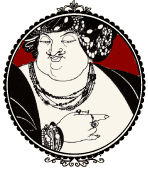

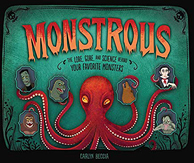
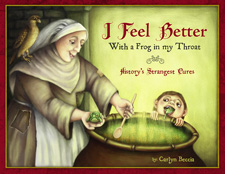
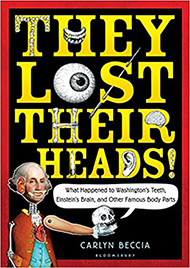


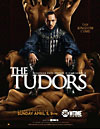

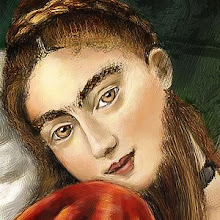













 Some Strange Art Coincidences
Some Strange Art Coincidences









